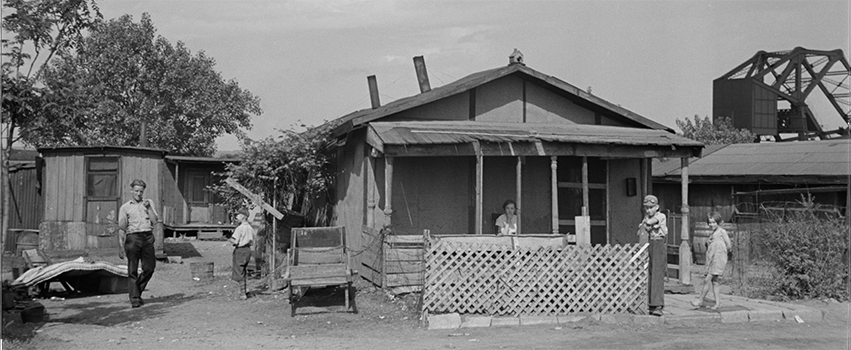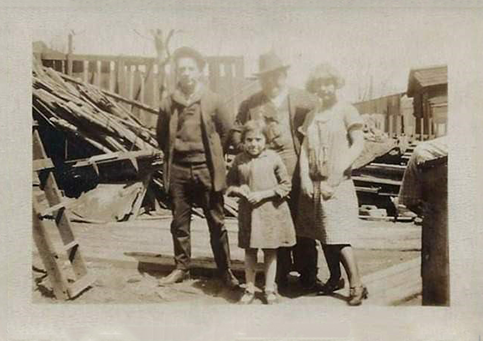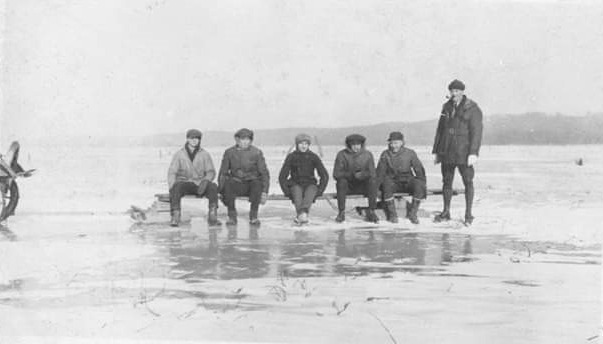Life Along the Illinois River

Glacial meltwaters carved out the Illinois River Valley and left behind the magnificent river, fertile lands and rolling hills that Native Americans thrived on for centuries. By the early 1800s, European settlers and American pioneers began to head west for land and opportunities in a brand-new country. Many of these adventurous spirits ended up in Illinois, which acquired statehood in 1818.
By the latter half of the 19th century, tens of thousands of people were living in the Peoria area. Early newspaper articles recount stories of people fishing, swimming, working, playing and living along the Illinois River—along with harrowing tales of flooding and drowning. As the faces and times changed, the river has remained a constant thread.
A Boomtown River City
Peoria’s riverfront bustled with activity as the Illinois River saw daily excursions of steamboats full of goods and travelers coming to and from Chicago and St. Louis. People made their living on fishing boats, and ferries brought passengers back and forth across the river. During the cold winters, Peoria businesses made a fortune cutting ice out of the frozen river and carving it into ice blocks for sale. Citizens would fill their iceboxes, keeping foods fresh in the days before refrigeration.
According to the Peoriana, a collection of early news items in the Peoria Public Library’s Local History & Genealogy Collection, something incredible happened on November 7, 1854: “The first railroad steam train arrived along newly laid tracks of the Peoria & Bureau Valley Railroad.” There was a citywide celebration on Main Street, with cannons fired over the river and a large bonfire on the river’s edge, as thousands gathered to watch history in the making. Most had never seen a train before.
With access to shipping, travel by steamboat and train, and plenty of fertile lands for agriculture and livestock, Peoria became a boomtown river city. Businesses grew and jobs blossomed along the riverfront and in the downtown. Millions of people left Europe and other countries around the world to try life in the land of opportunities—and many ended up in Peoria.
Neighborhoods popped up all over the city, their names reflecting the different nationalities and geographic descriptions. Some of these colorful neighborhoods included Goose Lake, Dogtown, Dublin, Averyville, Plum Point, Cow Town, Jackson’s Corners, Spring Hill Park, Mechanicsville and Slop Town.
Goose Lake took its name from a natural spring that was the city’s first water supply. Dogtown was further down the river near Bartonville, where packs of loose dogs roamed. Dublin was an Irish neighborhood. Averyville was named after Robert Avery, who founded a company that manufactured farm equipment. Cow Town and Plum Point were near farms and orchards, and Spring Hill Park was by a spring. Slop Town was located near Peoria’s meatpacking district.
Unfortunately, one of the downsides to Peoria’s rapid population growth was the lack of affordable, quality housing. For many residents, a “no man’s land” between the railroad and the river known as Cinder Point became home.

Life at Cinder Point
The Cinder Point neighborhood was located along the Illinois River near Sanger and Chicago streets. It was a poverty-stricken area, highly populated with closely-packed housing in various states of deterioration. Running water, sewers and electricity were unavailable, and most of its residents lived in squalor. Their homes were primitive shacks constructed of rotted railroad cars, food crates from downtown businesses, and whatever was dumped along the docks or happened to float onto the shore.
Many Cinder Point residents lived in tents, or makeshift tents, which were especially dangerous during floods. According to author Judy Rosella Edwards, a woman named Anna McDonald drowned in her tent at Cinder Point during the great floods of 1926, when the river hit 33 feet deep. She couldn’t afford to rent a room and lost her life.
The residents of Cinder Point made a meager living fishing in the Illinois River, picking up odd jobs, or working at factories and warehouses. They were laborers, wagon drivers for junkyards, and Teamsters in the coal yard. Wages were very low and families were much larger—they made just enough to provide the basics. Places like Neighborhood House and Friends of the Homeless were built to help the poor, but they couldn’t assist everyone.
Sometimes people suffering from poverty were “rent runners” as well. My own grandmother, for example, was said to have run from rental to rental in different parts of town to avoid paying rent monies they didn’t have. When her husband died, she was left penniless with three sons to support. She could have easily ended up in Cinder Point.
Cinder Point was a slum and considered to be blight on the city. This land was eventually sold to the Hiram Walker distillery, which bulldozed all of the shacks, shanties and tents in the 1930s. Today, Chicago Street still exists and runs right into the ADM plant, which used to be Hiram Walker.

A Destination for Recreation
Peorians didn’t just work along the river—they had fun on the river as well. Boating was a natural part of life on the river, a significant leisure activity in the 1800s and early 1900s. Rowboats and swimming in the warmer months were very popular. Shady Beach, located just north of the present-day McClugage Bridge, was a gathering place for picnics, socializing, swimming and boating. Nearby, Poplar Lane was another popular social place along the river in Peoria Heights.
During the winters, hundreds of people ice skated on the river. Sometimes the children would “windsurf” by holding onto a large piece of cardboard while soaring across the ice on their skates. Water skiing was another crowd favorite. Nearby, Al Fresco Park featured a Ferris wheel and many other amusements before it closed for good toward the end of World War II. Soon, there will be a new version of Al Fresco Park in the same location, thanks to developer Kim Blickenstaff, whose mother spent wonderful times there growing up.
Life on the Illinois River is much different today, but the river remains a constant. While pollution in the late 20th century harmed the ecosystem, the situation has generally improved since then. And just as Peoria’s Warehouse District is being reinvigorated with new businesses and leisure activities, our river can be a destination for recreation if we all put our energies and mind to it.
Every single one of us living here has one thing in common: we all live along the Illinois River. The revival of Al Fresco Park—and on the other side of the river, the new Sankoty Lakes Resort & Retreat—could help rekindle the desire for pristine beaches and clear waters, carving out a new role for the Illinois River in the 2020s and beyond. PM
- Log in to post comments

